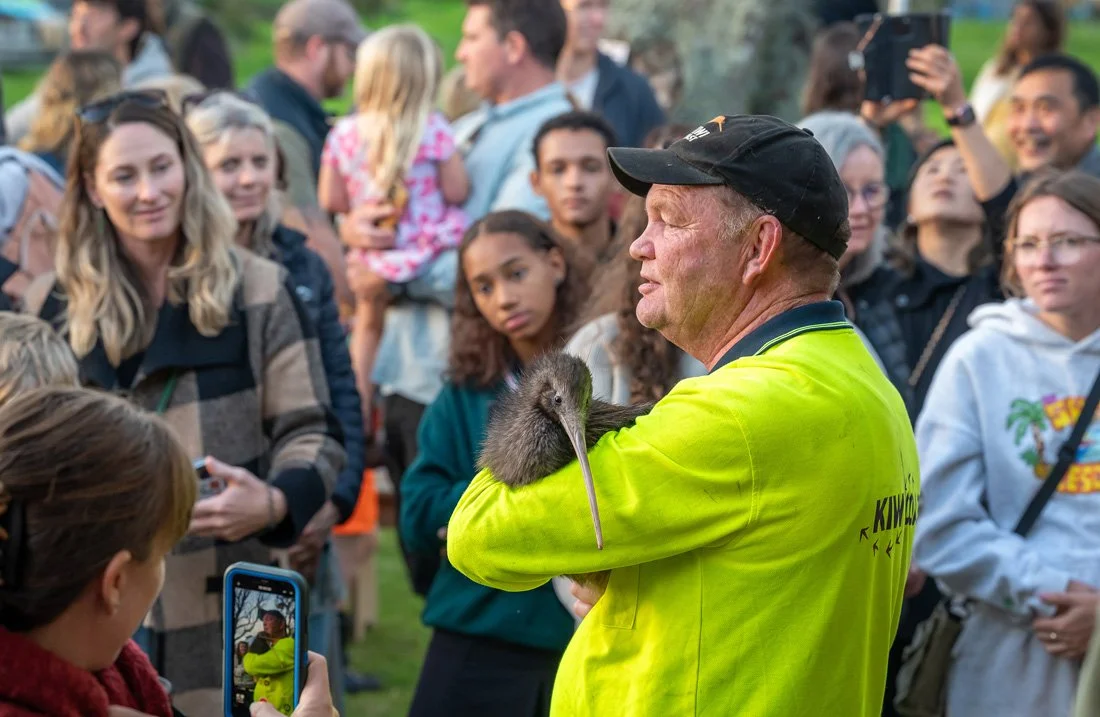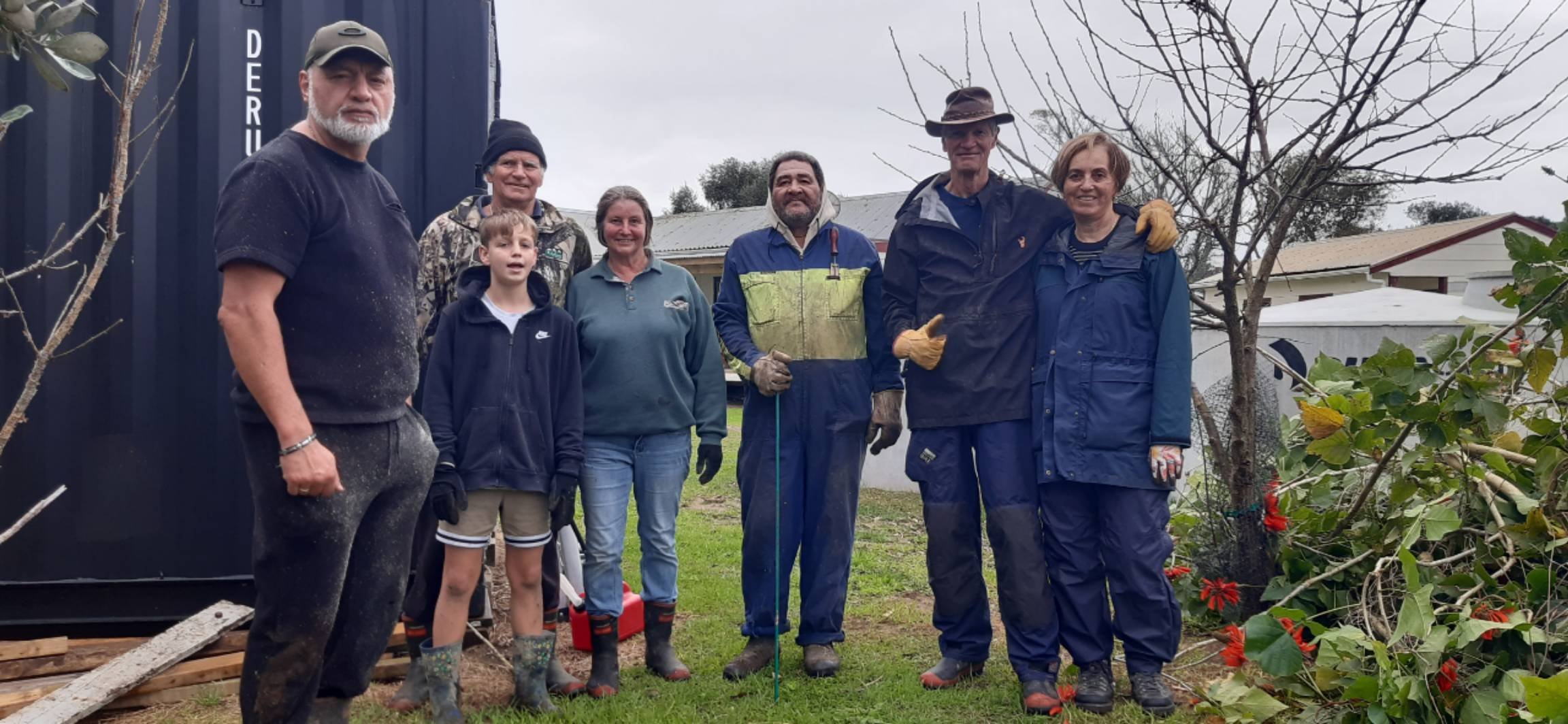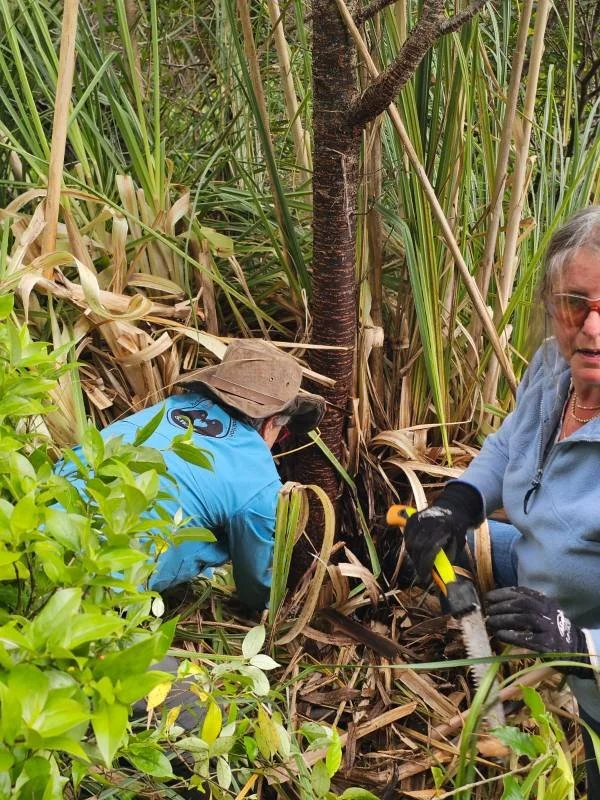SPRING 2025 NEWSLETTER
It’s been a while since TLC gave news of filed actions and office preparations. The only easy explanation for this long silence is that everybody has been very busy through autumn and winter, so this report will give an account of that has been running in terms of trapping, weeding, kiwi monitoring, and bird monitoring between May and September of this year.
An increasing engagement in TLC activities was shown by many willing members of the Ngunguru, Tutukaka and Matapouri Communities. These included members of te Rangiwhakaahu and Ngunguru marae; students and teachers from Ngunguru school; trapping volunteers, weeding volunteers, and volunteers in the control of rodents and possums. Several intrepid volunteers braved the winter conditions to complete a pindone operation that commenced at the end of August, deploying up to 100 kg in over 170 stations, with 2 to 3 pulses of the toxin placed in each. The final retrieval of residue toxin was completed in mid-October, with only around 2 kg of residue remaining, exceptional uptake by rodents and possums was achieved. Hopefully the rodent knockdown will benefit the spring nesting activities in an area of beautiful, core forest habitat between Matapouri-Ngunguru and the Kaiatea Ridge.
Figure 1: One of TLC’s volunteers loading a station with pindone toxin in the Camm-Davies area of the TLC HVA during September 2025 (photo Nick Davies)
Kiwi Release:
A warm participation was shown at the wonderful kiwi release event held on Wednesday 7 May, at te Rangiwhakaahu marae, Matapouri. The birds – Te Matā, Hinemoana, Kiki, and Chester – were firstly introduced to 200 children at Ngunguru School, and then presented to the gathering of 150+ of the community at the marae. The birds were ceremonially welcomed with a pōwhiri and karakia before being re-homed in prepared burrows within coastal and inland forest habitats.
(Malcolm Pullman)
Figure 2 Todd Hamilton at kiwi release with one of the kiwi (photo Malcolm Pullman).
Kiwi monitoring:
These birds released last May have been monitored (tracked) throughout winter along with the three kiwi released in April 2024. A lot of information can be gathered from the radio-transmitters attached to their robust legs: if a kiwi is walking or resting or …sitting on an egg!
On 9 September the tracking device confirmed that Te Matā’s transmitter had switched to nesting mode. This kiwi’s activity has dropped down to about 4 hours a night with the rest of his time spent sitting on the egg. His data stream indicates that he started nesting on 27 August, so hopefully we may have a chick before Christmas. And the female that Te Matā has chosen is Hinemoama, one of the other two kiwis released in April 2025.
Figure 3 Te Mata coming out of the borrow (Photo Cam McInness)
The burrow that Te Matā and Hinemoana have made is inside the base of an old Puriri tree stump, with a big hollow center that is open to the sky, but they have burrowed up into a corner that must be warm and dry enough. Trail camera footage shows him heading out for a feed every night and returning between later. Hinemoana is hanging out nearby and has also been seen on the trail camera entering the burrow, so she and Ta Matā may have a second egg on the way.
(Cam McInnes)
Kiwi counts
The 2025 annual kiwi call count data were collated by Nan Pullman during August, who also prepared a comparison among sites between the 2024 and 2025 surveys. For those sites with human observers, a 5% increase in the mean call count was recorded, now at 7.9 per hour.
About other birds… Regular sightings have been made of a bittern in the wetland location around the Pullman Lane area: in the Matapouri DOC mangrove reserve; and, in a local pond. Let's hope this bittern will become resident. The bird’s adaptive colouration makes it a very different animal to sight!
Figure 4 Bittern up on a tree (photo Kieran Pullman)
TLC is participating to the national bittern monitoring survey, but it has been tricky to get the still, clear and dry evenings needed for listening. But a few people managed to get out and listen around Matapouri Estuary in early October and November. Unfortunately, no male bittern were heard booming. Please contact Nan Pullman 0274 904483 if you want to participate in the monitoring survey.
(Nan Pullman)
For the past four years, TLC has been monitoring 8 species of birds (bellbird- korimako, fantail- piwakawaka, grey warbler- riroriro, kaka, kūkupa, kingfisher-kōtare, tomtit-miromiro, tui) during the autumn seasons using the “five-minute bird count” method (5MBC). During July, the results were summarised showing increasing trends, especially for: piwakawaka, tui, riroriro, and kūkupa across all sites; steady appearance of miromiro in “Riverine” sites; and korimako have now been observed for two consecutive years in both the coastal and forest habitats. This is really encouraging!
During July, a pair of Royal Spoonbill / Kotuku ngutupapa were observed feeding in the Te Wairoa estuary at Matapouri, below the bridge. A relatively recent arrival in New Zealand from Australia, the first being recorded at Castlepoint in 1861. Sightings increased through the 1900s, with breeding first recorded next to the white heron colony at Okarito, south Westland, in 1949. A population estimate in1977 reported 52 birds, and a repeat estimate in 2012 recorded 2360, with nearly 20 colonies throughout both islands. Locally a breeding colony set up camp at Taiharuru about 15 to 20 years ago, and over the past few years, small flocks of Ngutupapa have been fairly common on the mid-reaches of the Ngunguru River. We think this might be the first time Kotuku Ngutupapa have lingered at Matapouri.
Figure 5 A pair of Royal Spoonbill / Kotuku ngutupapa feeding in the Te Wairoa estuary, Matapouri observed during July (photo Malcolm Pullman)
These are all clear examples of the wonderful bird life (biodiversity) we have here on the Tutukaka Coast, surely enhanced by the decline in invasive predator numbers due the great trapping operation managed by Cam McInnes and David Trendall, and supported by TLC’s loyal trapping volunteers. Trapping was in full force since May with 1,670 of the worst predators caught (23 wild cats, 385 possums, 1,152 rats, 41 stoats, 69 weasels).
Pest weeds
Regular weeding events took place during all of Autumn and Winter in the different villages, in community parks and reserves: Ngunguru Kaiatea landing, Matapouri reserve, at Woolley’s Bay back dunes, on district property in Tutukaka near the water treatment plant. We also weeded the school grounds during school holidays with the help of Rebecca.
The most consuming job for the S.W.A.T. volunteers has been the Taiwan cherry control at the WDC area between the main road and the Tutukaka water treatment plant, and in the Ngunguru village. We managed to cut and paste or fell several thousands of Taiwan cherries of all dimensions! Most of the trees are very large and highly productive, with many cherries on the branches. We started before the flowering season but the ripening has been quick!
Another big challenge is the control of Flame trees, having very brittle and loose branches which, once reaching the ground, can re-sprout into new trees. Our experience in controlling them at a private property behind te Rangiwhakaahu marae and at the Matapouri reserve, has been very rewarding. We are aware that many people consider them “good food” for tui when there is little nectar around, however, this is a misguided fact. Both highly invasive Taiwan cherries and Flame trees flower only once a year for only a few weeks. It is a pity that our native birds get attracted by them and distracted from the long term flowering season of natives like puriri (that flower all year round).
Research findings have shown some native birds that feed on invasive plants cannot re-adapt to their original food. This would be a massive loss if the same happened to our native birds like wood pigeon and tui! Hopefully we can eliminate most of the Taiwan cherry and Flame trees in our area before these can cause real damage to our ecosystem! And not only damage to the birds, but particularly to our coastal forest, where they aggressively replace native species, as we have seen happen in the bush near the Tutukaka water treatment plant.
Team of weeders fighting flame trees, Matapouri
The team at work on Taiwan cherry
This past season we also focused on planting. We organized and engaged in several planting events, seeking to replace the removed weeds with native plants, and so we participated to events: organized by Puke Kopipi and the Northern Regional Council; we planted pohutukawa on Woolley’s Bay dunes to replace the invasion of cotoneasters; on the Matapouri reserve, (that was weeded many times in the past two years of moth plant, blue morning glory, Brazilian peppertrees, Flame trees), we planted pohutukawa, karo, and other natives; on top of William Parata reserve we planted karo, small flax, and manuka to fill in spaces created by a very dedicated landlord who has been controlling gorse in the past few years; and finally, at Snells Point Reserve where we enjoyed the warm participation of Ngunguru school kids in planting many natives to keep off the eradicated invasive Agapanthus. All these plants were generously donated by Tawapou and KiwiCan. We helped with a final effort to reforest Puke Kopipi, and we joined NRC and Ngunguru school again in plating dune vegetation to protect the back beach of Matapouri. School and volunteer participation made these events a real community engagement, even if in small numbers, working towards restoration and conservation of the natural environment. The dunes of Woolley’s bay and the wetland area around the village of Ngunguru are now more protected with a more resilient habitat thanks to the presence of more native vegetation defending the villages from the adverse effects of climate change.
Planting at Woolley's Bay beach dunes
More Planting with the community.
“In the late 1980's, when I was about 8 years old and attending Ngunguru school, we had a field trip to the Tutukaka headland reserve to plant Pohutukawa trees as part of a coastal restoration program called Project Crimson. 35 years later it's a joy to be continuing the tradition.” (Cameron McInnes)
Earlier this month 125 Ngunguru school kids from years 5 to 8 picked up their spades and got their hands dirty to plant out over 800 trees into the prepared plots.
The project is aiming to replace the rank kikuyu grass with native trees that kids will plant over a period of years, increasing native biodiversity, reducing fire risk and giving the kids a link to this amazing piece of our coastline.
The plan is to section off small plots of the reserve for each year group to plant out over a 2 year period. In the first year the kids will plant coloniser species such as Harakeke, Ti Kouka, Manuka etc and then 2 years later those same kids will return to their plot to inter-plant larger forest trees such as Pohutukawa. Each plot will have a small identifying marker so that the kids can visit their plots into the future.
This headland restoration project is a continuation of the partnership that Tutukaka Landcare has with the Earth Ed program at the school and is being set up to continue well into the future.
Thanks to Miriam and Dave from StudioNorth for sharing their time and tree expertise, to Kate from Dive! Tutukaka for managing the project, and to Westpac for funding the trees.
Also, to the Kids for all their mahi and of course the parents and teachers for their wrangling!
(Article by Cameron McInnes, Photos by Ben Evans)
Thanks to all these efforts, the communities of Matapouri, Ngunguru, and Tutukaka are now rejoicing from the presence of new kiwis and more native birds and can enjoy an environment which is richer in native species of plants and animals, less plagued with invasive carnivores and leaf browsers, and healthier from an ecological view point. Let’s keep up the good work!
TLC gratefully acknowledges our donors and supporters…





















